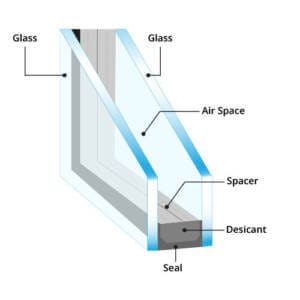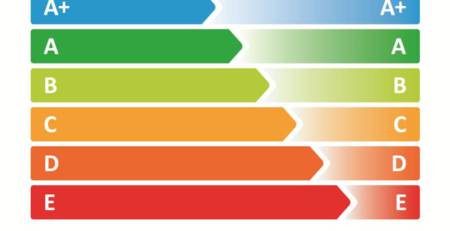What is Low-emissivity (low-e) glass used for?
Low-emissivity (low-e) glass is primarily used to improve energy efficiency and provide thermal insulation in glass installed in buildings. By reducing heat transfer and controlling the amount of ultraviolet and infrared light that enters a space, low-e glass helps maintain comfortable indoor temperatures, reduce energy consumption, and protect furnishings and fabrics from fading due to sunlight exposure. Low-e glass is commonly used in residential and commercial buildings, such as homes, offices, and retail spaces, and can be found in windows, doors, skylights, and curtain walls.
In the UK, several manufacturers produce low-e glass and related products. Some of the main manufacturers include:
- Pilkington (part of the NSG Group) – Pilkington is a leading UK-based glass manufacturer that produces a wide range of glass products, including low-e glass under the brand names Pilkington K Glass™ and Pilkington Optitherm™.
- Saint-Gobain Glass UK – A subsidiary of the global Saint-Gobain Group, this company offers a range of energy-efficient glass products, including their popular low-e glass options, such as Planitherm.
- AGC Glass UK – Part of the AGC Group, AGC Glass UK manufactures various glass products, including low-e glass, under the brand name iplus.
- Guardian Glass UK – Guardian Glass is another major player in the UK market, offering low-e glass products like ClimaGuard® for residential applications and SunGuard® for commercial buildings.
Insulated Glass Units (IGUs) are made by combining two or more panes of glass with a spacer and sealing them together with a gas or vacuum filling the space between the panes. They can include various types of glass, such as double-glazed, triple-glazed, or heritage glass.
- Double-glazed units – These IGUs consist of two panes of glass separated by a spacer, filled with an insulating gas (usually argon or krypton) or a vacuum. They are the most common type of IGU and provide better insulation than single-pane windows.
- Triple-glazed units – Triple-glazed IGUs have three panes of glass and two spacers, offering even better thermal insulation and noise reduction than double-glazed units. They are more expensive but are suitable for colder climates or where improved energy efficiency is a priority.
- Heritage glass – Heritage glass refers to specialized glass products designed to replicate the appearance of traditional, single-pane glass used in historic buildings while offering improved energy efficiency. Heritage glass can be used in IGUs to maintain a building’s aesthetic while meeting modern energy efficiency standards.
Low-e glass can be used in any of these IGU configurations, depending on the desired level of energy efficiency, noise reduction, and other factors.
A+ Rated Slim GLAZING
C Rated Slimline Double Glazing
A Rated Thin Heritage IGU
STANDARD SAFETY REPLACEMENT UNITS
-
Double Glazing
Buy Double Glazing Unit | 1st:4mm Clear Toughened | 2nd:4mm Clear Toughened | Warm or Alu Spacer | Safety Glass
Original price was: £98.65.£79.01Current price is: £79.01. inc VAT sq m
A RATED GLASS UNITS Calculator
-
Double Glazing
Buy Double Glazing Unit | 1st:4mm HP Low E Toughened | 2nd:4mm Clear Toughened | Warm or Alu Spacer | Safety Glass| Energy Efficient Glass
Original price was: £184.03.£92.02Current price is: £92.02. inc VAT sq m
A++ RATED GLASS UNITS Calculator
-
Double Glazing
Buy Double Glazing Unit | 1st:4mm HP Low E Toughened | 2nd:4mm HP Low E Toughened | Warm or Alu Spacer | Safety Glass| Energy Efficient Glass
Original price was: £242.44.£202.03Current price is: £202.03. inc VAT sq m






LEAVE A COMMENT